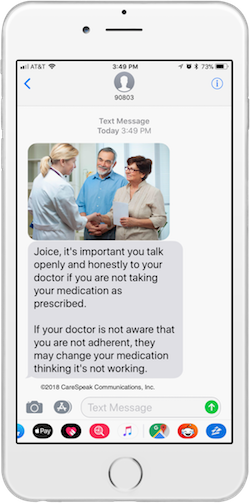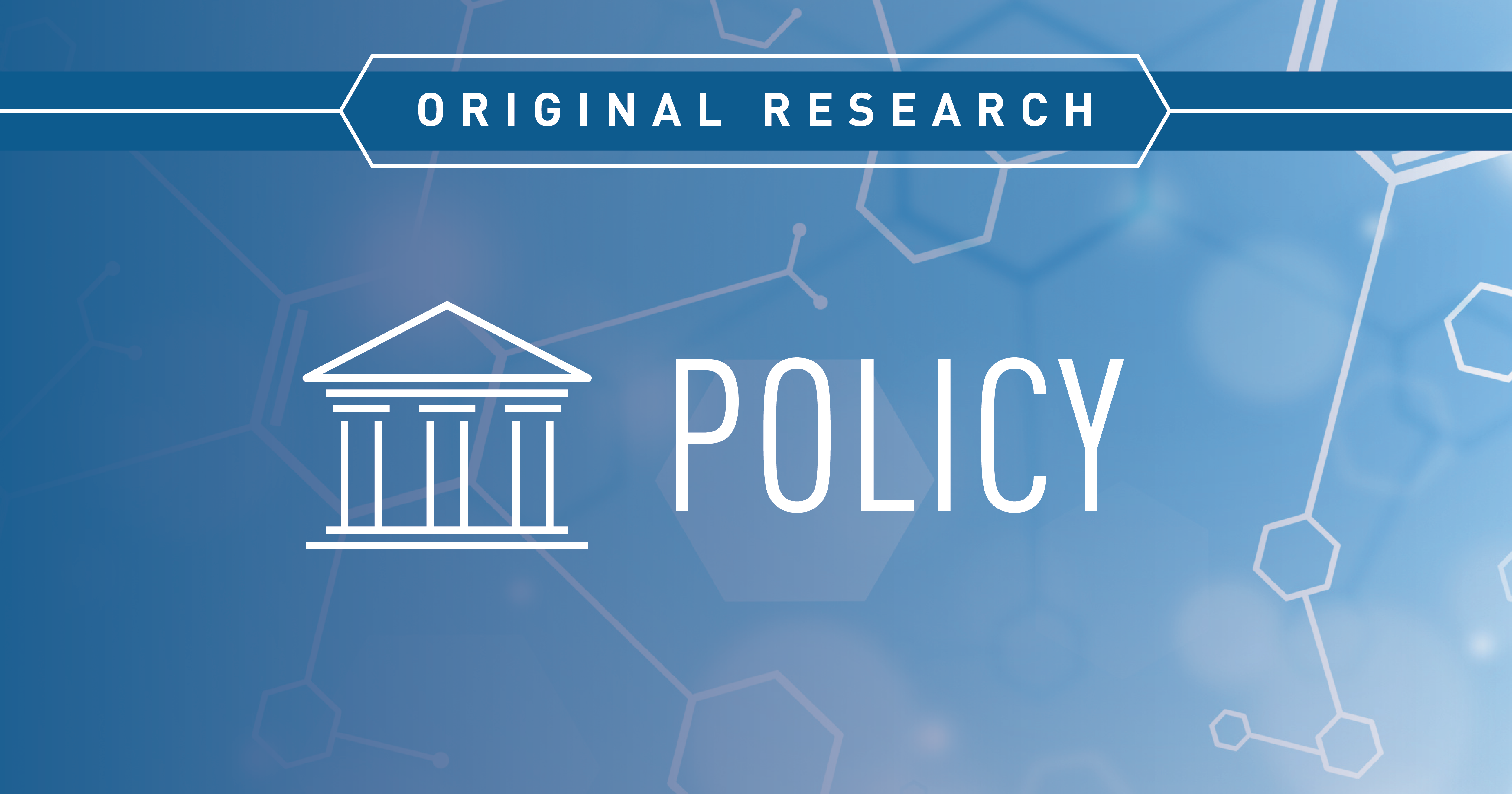Article
CareSpeak: Using a 2-Way Text Messaging Platform to Increase Medication Adherence
Author(s):
The mobile health services company CareSpeak provides an interactive health messaging platform through 2-way texting designed to engage patients and/or their caregivers, family, and friends throughout the patient journey.

Many patients find themselves struggling to manage multiple medications and complicated dosing schedules at one time. Often, these patients don’t fill their medication in a timely manner, and sometimes they don’t fill the prescription at all. Even if the prescription is filled, adhering to the medication as prescribed presents another uphill battle. In addition, the information a patient receives at the pharmacy about their prescribed treatments and their side effects is often not understood, or is forgotten
This is where CareSpeak comes in. The mobile health services company provides an interactive health messaging platform through 2-way texting designed to engage patients and/or their caregivers, family, and friends throughout the patient journey.
CareSpeak became operational in 2011, but the concept was created in 2006 when the term "mobile health" was not a common one. The concept originated as a platform for seniors that would engage their family members, who live remotely, to be a part of their healthcare experience.
However, at that time, there were no iPhone or Android platforms that were scalable, according to Serge Loncar, founding president and CEO of CareSpeak. The only platform that was truly scalable was text messaging, so they began building around that. When newer phone technology emerged, CareSpeak stuck with the text messaging platform because of its simplicity, and because it fits an everyday behavior that was true then and still is today, said Loncar.
“The reason we focused on text messaging is because when you look at your phone and you look at that little green icon, we think it’s probably the most valuable real estate because people get robocalls and junk email, but you never get an unwanted text message, or at least you shouldn’t, because the regulations are very stringent in protecting that space," said Loncar. "So, if the consumer lets you into that messaging channel, it means they want to pay attention and engage."
Essentially, CareSpeak’s text messaging platform allows the company to quickly support any patient journey or care coordination workflow; however, depending on the patient journey and the entity the company is working with, they may do this in different ways. When dealing with a specialty pharmacy, you’re often dealing with very complex dosing regimens and very expensive drugs, said Loncar. There is also the care coordination component. Offering a turnkey solution, CareSpeak becomes a business associate to the specialty pharmacy, making outbound calls to the specialty pharmacy’s patients to sign them up for the program.
When the patient interacts with the intervention, CareSpeak monitors all activities. If they see that a patient's medication adherence is below a certain threshold, or if someone responds to a question in a way that signifies that they may be having some issues, the system will notify CareSpeak’s monitoring agents or the pharmacist to intervene.
On the other side, when they work with a pharmaceutical manufacturer, they provide more of a chatbot-like intervention, said Loncar. Through this intervention, they enable the patient to self-manage. It’s a pre-scripted interaction, so CareSpeak will not receive any information other than what’s pre-scripted. If a patient tries to text back unexpected information through the platform, it will direct them to speak with their doctor or an appropriate entity.
The CareSpeak platform also integrates with other platforms through application programming interfaces, whether it’s customer relationship management for a pharmaceutical company, an electronic health record for an integrated delivery network, or integration with health plans to get data feeds.
Arguably the most valuable aspect of the software is the customization aspect. Loncar gave the example of oncology patients: “We know from the literature and clinical insights that 1 of the leading reasons for therapy abandonment with oncology patients is unexpected side effects,” said Loncar. “The same insights also tell us that if a patient’s expectations are managed appropriately about the potential side effects ahead of time, the patients are more likely to persevere through those side effects.”
For example, if a patient begins a medication and it is expected that a certain side effect will occur on day 15, on day 7 the intervention will message the patient on the side effect, how to recognize it, how to manage it, and advise them to talk to their health care provider.
Several studies have centered around CareSpeak’s texting intervention, presenting promising results. A study published in the journal Pediatrics assessed the use of the intervention with 41 pediatric liver transplant patients at Mt. Sinai Medical Center. Results showed that using the intervention to remind patients to take and refill their medication reduced the number of liver rejections from 12 to 2 (83% reduction) over a 12-month period. Another study published in Patient Education & Counseling used CareSpeak’s texting among 90 patients with coronary heart disease to enhance medication adherence and found a 15% increase in adherence.
In addition to medication adherence, the intervention also shows utility in reducing healthcare costs. In 2016, CareSpeak partnered with Molina Healthcare to combine the text messaging intervention with Medication Therapy Management among 581 disabled Medicaid patients with high disease burden. Results showed that patient engagement with the text message reminders was high, with over 70% of patients responding to more than half of the delivered texts. In addition to increasing medication adherence, the intervention led to an average reduction of $140.18 per patient per month in medical costs for 4 months following program enrollment.
“We are looking forward to the day that every prescription that’s written has a CareSpeak support component to it, and it’s truly a digital therapeutics experience for the patients and their caregivers,” said Loncar.
Tune in to our podcast interview with Loncar to hear more.
Newsletter
Stay ahead of policy, cost, and value—subscribe to AJMC for expert insights at the intersection of clinical care and health economics.




